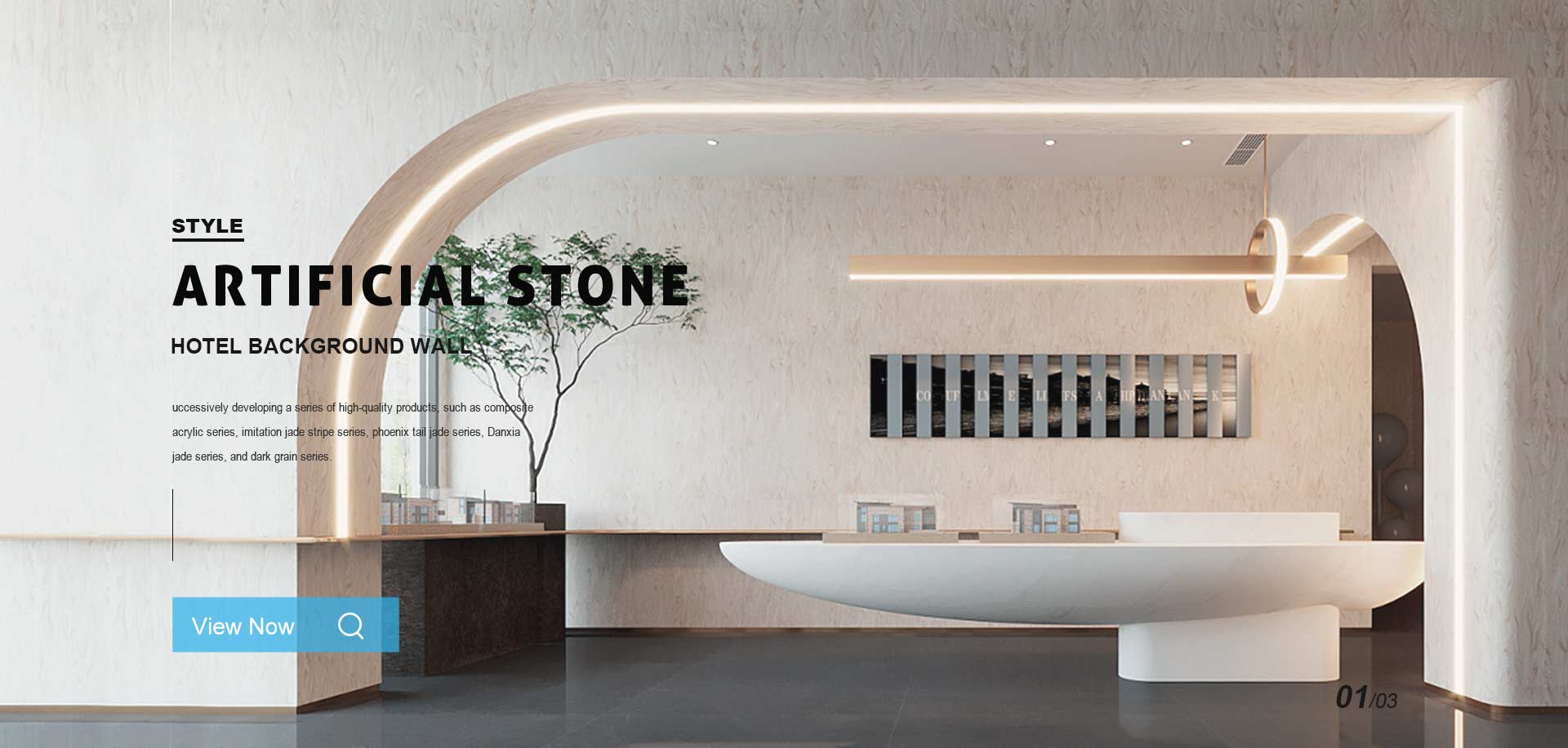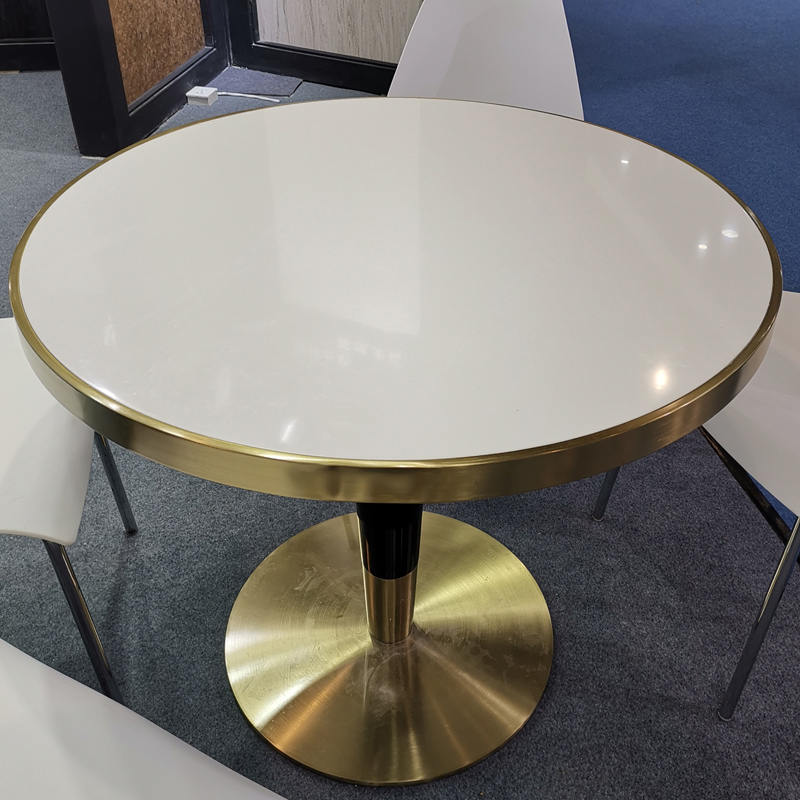
A Solid Surface Desk is a modern workspace solution crafted from engineered composite materials, typically composed of 33% acrylic resin and 66% natural minerals (such as aluminum trihydrate) with 1% color pigments. This homogeneous composition creates a non-porous surface with a density ranging between 1.7-1.9 g/cm³, offering superior durability compared to traditional wood or laminate surfaces. The material's thermal expansion coefficient of 50×10⁻⁶/°C ensures dimensional stability across varying environmental conditions. Unlike veneered or laminated surfaces, Solid Surface Material maintains consistent coloration and pattern throughout its 12-15mm thickness, allowing for seamless integration of joints and repairs.
Key manufacturing advantages include the material's ability to be thermoformed at 150-180°C, enabling creative curved designs with radii as tight as 3 times the material thickness. The surface hardness measures 80-85 Shore D, providing excellent resistance to daily wear while maintaining workability with standard woodworking tools.

The molecular structure of Solid Surface material permits invisible joining with specialized adhesives achieving 90-95% of the base material's strength. This creates monolithic surfaces up to 3.6 meters in length without visible seams, with thermal fusion bonding reaching 18-22 MPa shear strength. The homogeneous composition allows for 360-degree edge finishing, including integrated backsplashes or cable management channels routed directly into the material.
Laboratory testing demonstrates exceptional resistance to common office chemicals, withstanding 24-hour exposure to substances including:
Isopropyl alcohol (70% concentration)
Household bleach (5% sodium hypochlorite)
Acetone (with no surface degradation)
The material meets ANSI Z124.3 standards for stain resistance, showing no permanent staining after exposure to coffee, tea, or ink for 16 hours.
With a flexural modulus of 6,000-7,500 MPa and tensile strength of 45-55 MPa, solid surface desks support distributed loads up to 300 kg/m² when properly supported. Impact resistance testing shows the material can withstand 1.5 Joules of impact energy without cracking (ASTM D5420). The surface maintains its structural integrity across a temperature range of -30°C to 80°C.
The non-porous surface (water absorption <0.1%) inhibits bacterial growth, achieving a >99.9% reduction in E. coli and S. aureus within 24 hours (ISO 22196). This makes it suitable for healthcare environments where desk surfaces must meet HIPAA cleanliness standards.
Modern workplaces utilize solid surface desks for their 30-50% higher durability compared to laminate surfaces in high-traffic areas. The material's 45° gloss level provides optimal light reflectance for video conferencing while minimizing glare. Integrated solutions include:
Seamless monitor stands with 15° ergonomic tilt
Cable channels accommodating up to 20 network cables
Built-in wireless charging pads (Qi standard compatible)
Hospital workstations benefit from the material's compliance with ISO 10993-5 cytotoxicity standards. The seamless surface eliminates crevices where pathogens could accumulate, withstanding 10,000+ wipe-downs using hospital-grade disinfectants. Specialized antimicrobial formulations reduce bacterial viability by 95% compared to stainless steel surfaces.
University laboratories and classrooms employ solid surface desks for their resistance to common chemicals including:
Hydrochloric acid (10% solution)
Acetic acid (5% concentration)
Ammonium hydroxide (5% solution)
The material's Class 1 fire rating (ASTM E84) meets stringent campus safety requirements.
Home offices benefit from the material's ability to be custom-fabricated to ±0.5mm dimensional tolerance, allowing perfect integration with architectural elements. The surface maintains its appearance after 10+ years of residential use with proper maintenance.
Use pH-neutral cleaners (pH 7-9) diluted to 5% concentration. Microfiber cloths with 300-500 g/m² density provide optimal cleaning without scratching. Avoid abrasive pads exceeding 1,500 grit equivalent.
For stubborn stains:
Organic stains: Hydrogen peroxide (3% solution) applied for 5 minutes
Inorganic stains: Vinegar (5% acetic acid) with 1-minute dwell time
Permanent marker: Isopropyl alcohol (70% concentration)
Minor scratches (<0.1mm depth) can be removed using automotive polishing compounds with 3,000-5,000 grit equivalents. Deeper damage requires professional refinishing with 120-220 grit sandpaper followed by polishing to restore the original gloss level of 30-70 GU (gloss units).
Inspect adhesive joints annually for any signs of stress. The material's coefficient of thermal expansion requires 3mm expansion gaps per linear meter in environments with temperature fluctuations exceeding 15°C seasonally.